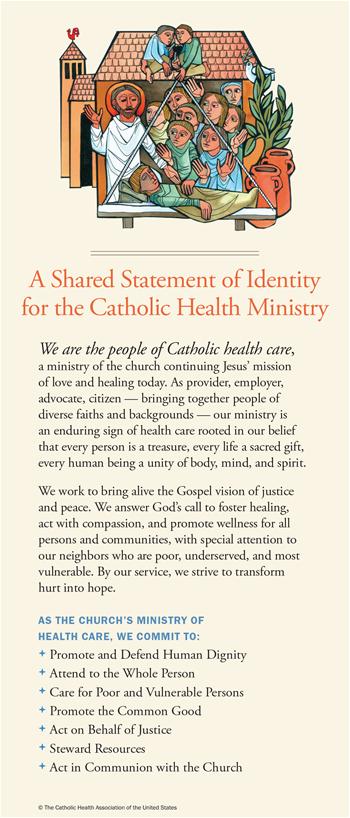BY: EILEEN MARINO AND JULIE TROCCHIO, MS
The Affordable Care Act requires tax-exempt hospitals to conduct community health needs assessments every three years and to adopt implementation strategies to address significant community health needs. Many Catholic hospitals have engaged in community health improvement for decades, including assessing needs and implementing plans, but the law added standardization and accountability.
 After the first round of assessments, most of which were completed in 2012, the Catholic Health Association surveyed members on their experiences with the process and reviewed a sample of assessments and implementation strategies. This was done to determine how CHA could assist members with the next cycle of CHNAs.
After the first round of assessments, most of which were completed in 2012, the Catholic Health Association surveyed members on their experiences with the process and reviewed a sample of assessments and implementation strategies. This was done to determine how CHA could assist members with the next cycle of CHNAs.
CHA coordinated these efforts with the Association of American Medical Colleges and VHA Inc., national organizations that asked their members the same questions. The American Hospital Association's Health Research and Educational Trust conducted a similar study, reviewing the CHNAs of 300 tax-exempt hospitals.1 All the groups' findings were similar — and encouraging — and all revealed the important role of partnerships, for collaboration with community partners was a major theme.
In conducting their community health needs assessments, all of the CHA surveys responding hospitals reported engaging to some degree with public health organizations (as required by the law), many at multiple levels. Fifty-five percent worked with state public health offices, 88 percent with county health departments and 45 percent with local health departments. According to one member, "identifying the significant health needs for our county was a community effort led by the health district with participation from various community members."
Of CHA's hospital survey respondents, 82 percent said they used significant input from public health experts while designing their implementation strategies — a practice that is not required by the ACA. However hospitals are required to solicit and take into account input from persons representing the broad interests of the community. When CHA asked who "played a significant role (that is, contributed to decision-making, at least partly responsible for the CHNA process/deliverables, etc.)" in the development and implementation of the most recent CHNA, 70 percent of responders said community residents played a significant role, and 74 percent reported that community-based organizations played a significant role.
The American Hospital Association's Health Research and Educational Trust study examined 300 tax-exempt hospitals' most common partnerships. It found that 78 percent of the hospitals had partnerships with primary and secondary schools, 68 percent with the American Heart, Lung or Diabetes associations, 58 percent with faith communities, 52 percent with United Way agencies and
45 percent with neighborhood organizations.
Partnerships also were included in developing implementation strategies. The CHA survey found that 68 percent of responders included
input from community residents in developing community health improvement plans.
CHA's survey revealed that 98 percent of responders plan to use their CHNAs to work with community partners to address community health needs. The responders said their CHNAs showed that the most pressing needs include access to care, obesity, mental health, diabetes, substance abuse and stroke/heart disease. CHA also found that the needs for dental health and senior services were identified by fewer, but still a significant 20 percent of responders.
These kinds of community health needs cannot be addressed by health care organizations alone — they will require collective action through partnerships. What's more, many needs have their roots in communities' social and economic environments, and CHA's review of implementation strategies revealed that most hospitals plan to address social and economic determinants of health — strategies that also require partnerships to be successful.
As Chris Lowney wrote in the September-October 2014 issue of Health Progress, "A hospital system can't help an individual find a job, stop drinking or stop abusing family members, but we can work with Catholic Charities or other faith-based agencies who work in these fields. We may have no skill at getting families into more stable housing, but Mercy Housing sure does."2
As partnerships progress and implementation strategies to address community health needs are carried out, CHA will continue to monitor and report progress.
EILEEN MARINO is a CHA intern and student at Georgetown University School of Nursing and Health Sciences, Washington, D.C.
JULIE TROCCHIO is senior director, community benefit and continuing care, the Catholic Health Association, Washington, D.C.
NOTES
- Health Research and Educational Trust, Hospital-Based Strategies for Creating a Culture of Health (Chicago: Health Research and Educational Trust, 2014). www.hpoe.org/cultureofhealth.
- Chris Lowney, "Reclaim Catholic Vision of Care," Health Progress 95, no. 5 (September-October 2014): 21.